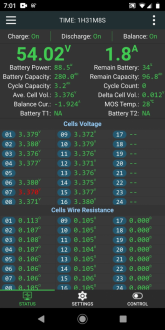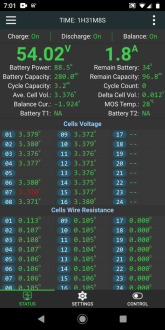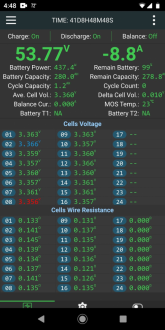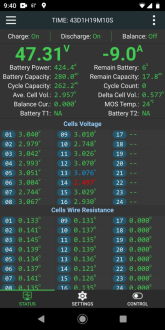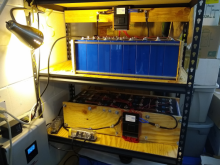Truly appreciate all of this insight and advice. We are starting to pollute ArthurEld’s thread so it would be fantastic if you could post some of this detail on the thread I started entitled JB Weld vs Loctite for Grubscrews: https://diysolarforum.com/threads/jb-weld-versus-loctite-for-grubscrews.17440/I don't know yet. I will know when I reassemble my cells. Keep in mind I had no threads left. So I wouldn't expect it to be as strong as using Loctite in a cell with non stripped threads.
3nm and I stopped. When I reassemble my cells I will try for 4nm and stop there. Your chances for success are better since you have a few threads left.
What I meant by that statement is it is a personal decision whether or not to use it on non stripped screws and I should have made that clear.
For partially or fully stripped studs I do recommend it. There may be better products for this but I was in a hurry and did not research everything that's out there. Like you, I watched the YouTube videos comparing different products and decided if the standard JB Weld doesn't work, then it's likely nothing else will.
Yes but don't overdo it either. In my case some did continue to ooze up over a short period of time...maybe 15 minutes at most. I lightly cleaned the cell's terminal with acetone to make sure there wasn't any residual left and I waited a bit to allow the JB Weld to start curing. I didn't want any acetone going down into the hole and I didn't want to disturb the stud for the remainder of the cure.
I broke off the head of a Q-tip and used the stick to apply the JB Weld to the inner part of the cell's hole where the threads were. Naturally some flowed to the bottom of the hole. I saved the mixed batch and occasionally checked it to take notice of the curing process. It did take a good long while before the JB Weld was fully cured in my mixed batch, at least the full 24 hours.
Ultimately the best thing to do is to tap the hole. But by the time one buys everything needed to properly tap the terminal, one is approaching the price of a new cell. And since I only have one stripped cell, I thought I would try this first.
I am fully aware this subject is debatable and it is an excellent debate. I am sharing my recommendations based on my own experience and the posts of others. I always look forward to other's experiences concerning the topics I am interested in, and this is one of those topics. That's my disclaimer...lol.
There is a member who just posted on that thread his plan to literally drill a vent hole through the entire length of his studs because he believes that is the only way he will be able to thread his studs down to the bottom (he does not believe JB Weld will ooze through non-stripped threads).
Would love to understand your opinion on that (in the other thread).
For me, I’ve decided I should heed my own advice and use JB Weld to secure an M6 bolt into an aluminum M6 tapped hold before I try JB Weld on my damaged cell.
Was your terminal so stripped that it was like a drilled hole (smooth sidewalls)? And it was stripped all the way to the bottom (literally no thread left)?




